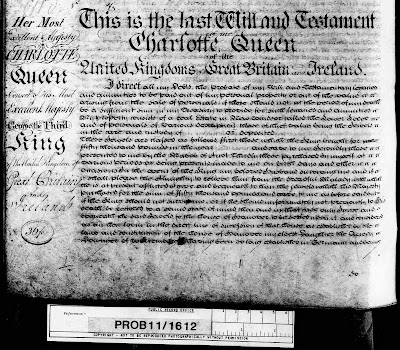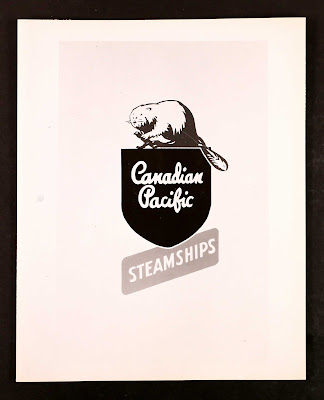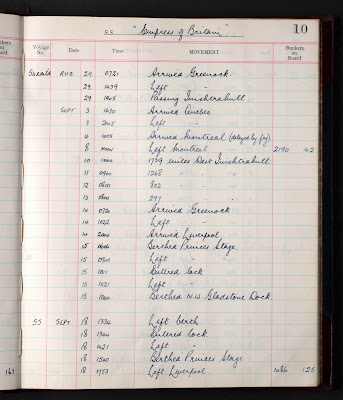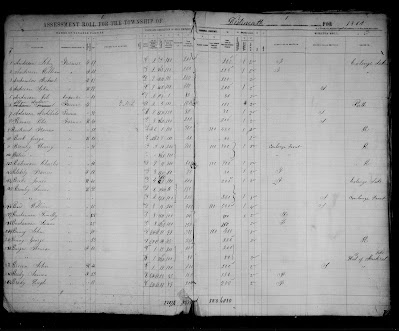Maybe the civil or church authority who recorded the name in an official document spelled the name as they heard it. I came across that challenge for the household of John Haughton in the 1881 Census of Canada where the enumerator recorded the name as "Hutton".
We might even come across cases where a nickname or diminutive of the name is recorded. Possibly someone was named after their great-aunt Agnes but they go by the name Nancy since they think that Agnes sounds old-fashioned.
Then there is the interesting case a patron at a recent joint Ottawa Public Library - Ottawa Branch of Ontario Ancestors Genealogy Drop-In brought to the group. She was looking for help in locating the will of the 12th or 13th Earl of Derby as part of her efforts to confirm a family story of a possible undocumented child of one of those two Earls.
It should be easy to find the will I thought.
The first thing I did was to look up the details about the 12th and 13th Earls of Derby using Wikipedia to find out their birth names and when they died. I could also have looked up the entries in Burke's A Genealogical and Heraldic History of the Peerage and Baronetage, the Privy Council, Knightage and Companionage.
I learned the following details:
- 12th Earl of Derby: born Edward Smith-Stanley and died 21 Oct 1834
- 13th Earl of Derby: born Edward Smith-Stanley and died 30 Jun 1851
Since both of the Earls died before 1857, I can't use the "Search probate records for documents and wills (England and Wales)" site. At the drop-in, John Reid, one of our subject matter experts, suggested that we need to look in the Prerogative Court of Canterbury (PCC) records since they cover the years 1384 to 1858. Since Ancestry has indexed and made available the images from the PCC wills in their "England & Wales, Prerogative Court of Canterbury Wills, 1384-1858" collection that's where I started.
And got absolutely nowhere!
I searched for any "Edward Smith-Stanley" who died around 1834 or 1851. I even searched for Edward Smith Stanley". I searched for all kinds of variations on the name and expanded the year range but there was no one who matched what I was looking for.
Since we only have an hour to help those dropping in, I put the searching aside and the group continued with the next question. But this was an itch that I just couldn't scratch. So at around 11 p.m. that night (it was one of those "I can't sleep" research itches) I dived back in this problem.
Might the will had been proved in another court such as the Prerogative Court of York or at a local court in England?
But first there was one other place I wanted to check for the Prerogative Court of Canterbury wills. That is The National Archives (England) "Wills 1384-1858" research guide since it has a search box. Instead of searching by name I searched for the keyword "Earl of Derby" (without quotes). I got back 18 results and two results got my immediate attention:
Reference: PROB 11/1853/415
Description: Will of The Right Honorable Edward Earl of Derby of Chester , Cheshire
Date: 25 November 1835
Held by: The National Archives, Kew
and
Reference: PROB 11/2140/271
Description: Will of The Right Honorable Edward Earl of Derby of Angel Inn, John Street, Minories , City of London
Date: 22 October 1851
Held by: The National Archives, Kew
So it seems that the wills for both the 12th and 13th Earls of Derby were proven in the Prerogative Court of Canterbury. I could even download a digitized copy of both of those wills for free from The National Archives if I sign in with my free account.
Yet why couldn't I find these wills on Ancestry?
I puzzled over that for a few minutes and then noticed that nowhere in the description is his birth surname "Smith-Stanley" recorded. Could Ancestry have taken his title and used it as his last name?
In searching for any "Edward" with the last name of "Earl" who died around 1834 only one entry was returned in the results:
Same with searching for any "Edward" with the last name of "Earl" who died around 1851:
After reviewing the images, I was certain that was them. It only took me less than two hours of effort to find the will and to understand why I couldn't find the information during our drop-in.
Now that we know how those copies of the wills of the peerage of the United Kingdom have been possibly recorded in the index of the "England & Wales, Prerogative Court of Canterbury Wills, 1384-1858" database on Ancestry we can try our hand at finding other wills of nobility proven in that court.
We can find other interesting wills of the English and Welsh peerage in this Ancestry collection by searching on the rank of nobility such as Earl/Countess, Viscount/Viscountess, Marquess/Marchioness, or Duke/Duchess, as their last name. But Duke and Earl are also possible actual last names. How do we filter out the non-peerage? By adding an exact Keyword match of "Honorable" or "Noble". You can even leave off the rank of nobility and just search use the exact match Keyword of "Highness" to find wills of some princes and princesses. I even came across the copy of the will of Her Most Excellent Majesty Charlotte, Queen of the United Kingdoms of Great Britain and Ireland by just using the exact Keyword search of "Majesty" and leaving out all the other details.
So be creative when you are doing your searches by name, especially when it comes to those of who are Peers of the United Kingdom!
 In our genealogy and family history research we've all probably come across challenges with finding someone in the records when searching for them by their name. The issue could be a problem with the transcription used to create the index such as what I found for the household of Thomas S. Pattillo inthe 1911 Census of Canada where the surname was originally transcribed as "Pattires" by the folks at Ancestry.
In our genealogy and family history research we've all probably come across challenges with finding someone in the records when searching for them by their name. The issue could be a problem with the transcription used to create the index such as what I found for the household of Thomas S. Pattillo inthe 1911 Census of Canada where the surname was originally transcribed as "Pattires" by the folks at Ancestry.![Extract from the 1911 Census of Canada, Nova Scotia, Colchester, Truro, p 13 of the Thomas S. Pattires [Pattillo] household](https://blogger.googleusercontent.com/img/b/R29vZ2xl/AVvXsEinvBY1kieeZ_DDxuYuY-OsT_csfUREw5InjANohdEFqIPoGENMaILpfUz4KuVhqghNNzAIfaqMq_HXppK4FiXtIPVQsdOzGV-_jk-4q1tghxl4rDT8-0CYFDawdJ7JeUoK-9vYEykUUKV4omiFVtnAtySNOScw_FS8WFaPrNOZiUtAuqPByUmVwNL3btw/w400-h113/Blog%20-%201911%20Census%20of%20Canada,%20Nova%20Scotia,%20Colchester,%20Truro%20(25),%20p%2013%20-%20Thomas%20Pattires%20(Pattillo)%20household%20extract.jpg)
,%20Division%202,%20p%2061%20-%20Household%20of%20John%20Hutton.jpg)

































